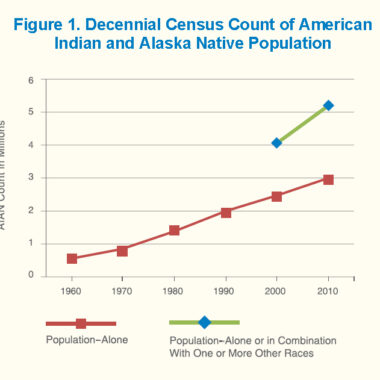In today’s digital media, VOD reigns supreme. Your best option for obtaining this in front of a crowd will be a video on demand. Let’s examine what VOD is, the formats it may be utilized in, how it relates to linked TV, and why this time period is becoming more popular.
Table of Contents
What is VOD, or video on demand?
Video on demand is the definition of VOD. It refers to media that can be broadcast at the viewer’s discretion or upon their “demand.” This can be done either by downloading the content to the viewer’s device for later viewing or by directly broadcasting from an online source. This contrasts with conventional broadcasting, where a viewer can only see their film on a device with such a cable subscription connection and only at a certain time.
Pay-per-view transmissions of live broadcasts and motion pictures over satellite and cable connections marked the beginning of video on demand. With the rise of fast internet and smartphones, it has subsequently transitioned to the digital sphere. Today, anywhere we have fast internet access, whether at home or on the go, we can view high-quality on-demand video.
How does on-demand video operate?
VOD operates by delivering data packets to the video player from servers containing video material.
Two business strategies are typically used by VOD providers to monetize their video on demand content: subscription-based VOD (SVOD) & advertisement VOD (AVOD). Let’s examine each model’s benefits and drawbacks, and some instances of VOD providers that employ each one:
In return for showing viewers adverts, AVOD offers free access to its VOD content. You use the AVOD model when you watch on-demand movies on websites like YouTube, Pluto TV, Xumo, DailyMotion, and Crackle.
Your ability to make money from a particular advertisement is influenced by a number of variables, such as the length of the advertisement, whether it is skippable, the type of interactive features it contains, whether users click on the advertisement and complete a conversion action, and how appealing your content is to advertising companies. For audiences that don’t want to pay the money for accessing your material, AVOD is great. The money you make from ad placements, on the other hand, might vary greatly and is greatly influenced by the algorithms that the live streaming platform is currently using.
Producers like Amazon Prime, Hulu, Netflix, Disney+, and HBO Max all use the SVOD business model. With this type of VOD, customers pay for premium memberships that provide them access to a vast collection of VOD material when and as often as they choose. They also avoid third-party adverts while watching. Some websites, like Youtube Paid, have an AVOD free version and an SVOD subscription version without commercials. Platforms for hybrid VOD are known as these. Broadcast VOD is a service provided by television networks including NBC, CBS, and the BBC that allows content that will be first broadcast on traditional TV to be published online for on-demand viewing.
Although the profits from selling to an SVOD company can be considerably more predictable, your content is far more subject to the whims of the live streaming service.
Learn about apk
What distinguishes live streaming from VOD streaming?
Given that we now know what VOD is, it’s important to clarify how it varies from live streaming, its cousin. Both VOD and video broadcasts are OTT (over-the-top) methods of content delivery, which means they are transmitted over the internet as opposed to cable or satellite. The term “live streaming” refers to the practice of streaming video in real time over the internet. Because a live stream only happens at predetermined times, it cannot be seen at a later time.
Must Read: 10 Crucial SEO Ranking Factors You Need to Know
It is utilized for a variety of events, including newscasts, press events, product launches, and particularly live sporting events.
Since data must be provided to the viewer’s video player in numerous additional, smaller packages in order to reduce the time between transmission and receiving of the streaming data, live streaming is more technically challenging than video on demand services. Live streams use techniques like adaptive bitrate broadcasting to ensure smooth transmission and reduce latency on the receiving end since video players can’t cache large amounts of content.
Another challenge to commercialization is live broadcasting. Since no one wants to be watching a commercial when the game-winning team scores or a significant piece of news breaks, viewers typically won’t put up with their video feed being interrupted by advertisements. Instead, live streams frequently demand money to get access, play advertisements during a brief, specified commercial breaks, or obtain sponsors for the broadcasts.
How can I build a VOD app and what are VOD apps?
Apps for streaming video on demand allow users to access content libraries from a variety of platforms. These CTV-related apps are available for download on devices.
To interact with their audiences directly, offer the finest viewing experience, and gather data for the best possible ad targeting, content creators create applications that people may download.
Determine the elements you want for your on-demand event before you start developing a VOD app for CTV. Do you prefer an AVOD or SVOD approach? Which interface do I desire? Would it be preferable to have my videos included in an aggregator instead of starting my own on-demand network if I had enough content to sustain it? What platforms are of interest to me? Once you’ve decided how your app should look and function, you can either write it yourself or use Direct Advertisers on the platform.
Must Read: 7 Ways to Increase Your YouTube Subscribers
Another option is to hire a firm like VlogBox to create your app and upload it to stores on Roku, Apple TV, and Amazon Fire TV. The company uses a revenue-share model and offers unique app creation, depending on a variety of variables, including the number of subscribers, the caliber of the material, and the demands of the individual customer.
What to Expect for VOD in the future?
A growing number of people are joining the global VOD audiences thanks to the availability of cheap, powerful portable devices and fast internet. As a result, there is more than enough possibility for fresh growth and room on the market for both established and emerging competitors in the VOD industry.
Learn about, click here: iMac pro i7 4k and Mbc2030 live, ifvod tv








